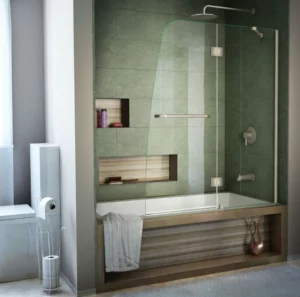
Top Quality Shower Imports Algeria | Crownshower Solutions
Introduction The Algerian bathroom fixtures market is booming. Quality shower products are in high demand. Distributors and bath product companies seek reliable suppliers. This guide

The functional design of bathroom ceramics can be divided into practical, aesthetic and cognitive functional levels, with attention to the principle of integrated coupling of “deep needs” and “quality systems” at the practical level, the principle of interplay of “multidimensional feelings” and “cultural integration” at the aesthetic level, and the principle of “interactive behaviour” at the cognitive level.
At the practical level, attention should be paid to the principle of integrated coupling between “deep needs” and “quality system”; at the aesthetic level, attention should be paid to the principle of mutual interaction between “multi-dimensional feelings” and “cultural integration”; at the cognitive level, attention should be paid to the principle of synergistic design between “interactive behaviour” and “environmental protection”. The design principle of synergy between ‘interactive behaviour’ and ‘environmental protection’ should be taken into account at the cognitive level.
The bathroom ceramics product range consists of three main categories: bathtubs, washbasins and toilets, while the supporting products are divided into toiletries, hardware and plastic products. The target group covers almost all people. In order to meet the growing demands of users and the market, the functional design of modern bathroom ceramics products is gradually being optimised and improved.
The current thinking about ‘functionalism’ in industrial product design has reached a deeper level. German industrial designers have put forward the TWM system function theory, in which they believe that the function of a product should include three aspects: technical function, economic function and service function. Among them, the service function covers a larger area, including the comfort of using the product, visual beauty and so on.
In the 1960s, Mukalowski, a semiotician of the Prague School, divided the concept of product function into practical function and linguistic function in his study of cultural semiotics, and later further divided linguistic function into symbolic function and formal aesthetic function. And product function is a multi-layered concept, which contains practical, aesthetic and cognitive aspects.
It can be seen that in the contemporary era of material abundance and advanced technology, design is no longer limited to the use of the product itself, but takes the psychological and emotional experience of people as the starting point.
Based on contemporary design contexts and the research of previous scholars, this paper analyses the functional design of bathroom ceramics for domestic use from three perspectives: practical, aesthetic and cognitive functions.

Utility is the material value of the product in the process of serving the user and is the primary function of home bathroom ceramics. The practical functions of household bathroom ceramics can be roughly divided into two categories: basic functions and extended functions.
The basic functions are the original functions of the product, such as squatting, sitting, standing, water storage and drainage.
The extended functions are additional functions developed on the basis of the original functions by using science and technology with the user’s needs in mind, such as female washing and care, intelligent temperature control, energy saving and environmental protection.
Aesthetic function refers to the aesthetic experience that the product conveys to the user through its own material image, and this experience can provide the user with psychological and emotional services.
Aesthetic function is a multi-dimensional exploration of the user’s spiritual needs based on the practical functions of home bathroom ceramics products. Aesthetic function can be presented in the form of shape, decoration and colour.
On the one hand, aesthetic functions are designed according to the needs of practical functions, structures and standard specifications; on the other hand, they are also adjusted according to the corresponding aesthetic laws and aesthetic trends of the times, such as the popular styles of home decoration.
Cognition is the process of knowing and knowing about things, i.e. the process of acquiring, organising and applying information. Cognitive function is a prerequisite for the practical and aesthetic functions of home bathroom ceramics products.
The key to cognitive function is the fluency of the interaction between the user and the product. Home bathroom ceramics products serve a wide range of customers and service environments.
Therefore, home bathroom ceramics products should not only meet the cognitive needs of the general family model and family environment, but also meet the cognitive needs of special family members.
Continuously improving and enriching the functional design of home bathroom ceramics products is an important development path to promote the continuous innovation of its products, and is also an effective means to serve life and be close to life.
With the improvement of modern people’s living standard, users’ demand for the functions of home bathroom ceramics is no longer limited to its basic functions, but pursues a higher level of using experience.
The contemporary design of domestic bathroom ceramics has gone through a difficult journey from scratch, from existence to refinement, and the home environment is constantly changing, affecting the development of the function and design of domestic bathroom ceramics products. Taking the development of urban residents’ household conditions and the development of bathroom ceramics industry as the route, the development vein of functional design of household bathroom ceramics is analysed.
After the Second World War, the bathroom ceramics industry had initially established industry norms and a complete operational system, but the design force was weak, production capacity was low, and the development of functions was limited by technology, the market and other factors, and its functions were relatively homogeneous and there were fewer styles. Before the reform and opening up, due to the low living standard of people, restricted by the living environment and household type at that time, there were usually no independent bathrooms in ordinary residential buildings, but mostly in the form of public toilets, dry toilets, public showers, etc. The market demand for household bathroom ceramics products was less.
As a result, there was a low level of demand for bathrooms. At the same time, the high production costs and high market prices of domestic bathroom ceramics products further limited the popularity of domestic bathroom ceramics products.
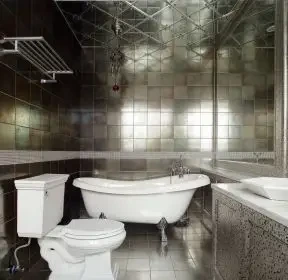
(1) Practical functions were developed and optimised around basic functions: the design of practical functions at this time was not yet perfect, and basic functions such as flushing and drainage could not achieve the desired effect.
(2) Aesthetic functions were forced to yield to practical functions: design problems in the early stages of development were mainly focused on practical functions, and aesthetic functions had not yet attracted the attention of designers and engineers, and modelling and decoration had to yield not only to the structural design of practical functions, but also to the production technology of the time. For a long time it was not possible to develop more aesthetically pleasing shapes for iteration, and the colours were almost exclusively white.
(3) Cognitive functions were mainly focused in the direction of added value for status: during a difficult period of economic and technological development, a host of bathroom ceramics products such as commode, ceramic bath vanity units and bathtubs were luxury items and were rarely used in private households.
In general, the aesthetic and cognitive functions of bathroom ceramics products in the early stages of development were subservient to and compromised with practical functions, and the design of the products was aimed at solving basic uses.
In the early days, the development of domestic bathroom ceramics design was difficult, and under the influence of national economic difficulties and technical constraints, the domestic bathroom ceramics industry was not very productive, the scale of enterprises was small and the market was immature. Its understanding of the concept of functional design only remained at the superficial level of the improvement and optimisation of practical functions, without the ability or need to study the deeper functions such as aesthetics and cognition.
The rapid development of the bathroom ceramics industry from the 1960s to the 1980s. With the development of the national economy and the progress of science and technology, the building sanitary ceramic bath industry developed rapidly and the production and sales of building sanitary ceramic baths increased year by year, which further promoted the development of the functional design of bathroom ceramics.
As a result of the country’s comprehensive strength, the gradual promotion of commercialised housing and the growing consumer demand, bathroom ceramics products began to enter thousands of households and became a popular commodity, with issues such as comfort and aesthetics gradually receiving attention.
(1) The practical functions have been upgraded from “basic optimisation” to “sensory expansion”.
Along with urban development and the boom in commercial housing construction, the basic functions of bathroom ceramics products are no longer the focus of design, but the design concept of bathroom ceramics products in terms of comfort and convenience is gradually being strengthened.
In terms of basic functions, the design of home bathroom ceramics has developed considerably in terms of human proportional scale, user behavioural paths and human-computer interaction.
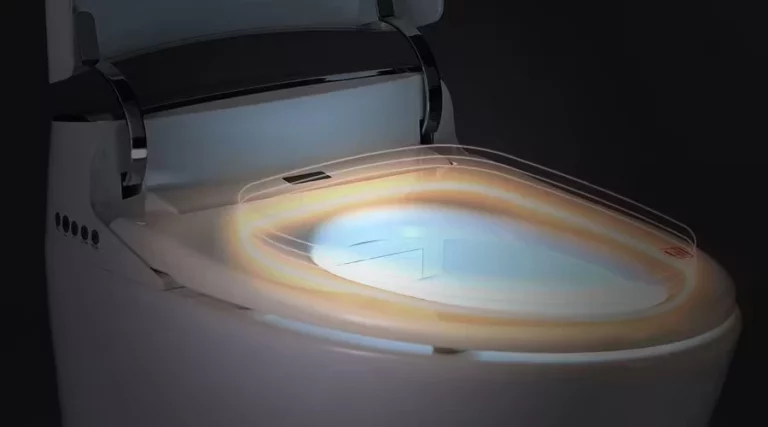
In terms of extended functions, home bathroom ceramics product design paid more attention to issues such as the positioning of the user’s identity and the level of consumer perception, enriching the extended functions of the product. “By the end of the 1990s, the use of high-grade sanitary ware changed the accessory fittings of the bathroom as well as the way it was assembled, and one-piece shower rooms were increasingly used by ordinary families ……
Later, as technology progressed and bathing requirements increased, luxury bathroom products such as massage bath strikes and steam showers began to enter the market.
Shower rooms are divided into integral shower rooms and simple shower rooms according to function; corner-shaped shower rooms, one-line open shower screens, round-arc shower rooms, bathtub-on-bath screens, etc. according to style; and square, full-round, fan-shaped, drill-on-shape shower rooms according to the shape of the chassis.”
(2) The aesthetic function developed from “conservative inheritance” to “individual diversity”.
In the late 1980s, the aesthetic function of bathroom ceramics products became a major concern, with issues such as the uniqueness of the product and the overall style of the decoration being taken into account in the selection of products.
For example, the ‘large vanity unit with decorative columns’ of the 1990s was one of the more popular and exquisitely decorated bathroom ceramics products of the time.
With the development of technology and breakthroughs, the colours of bathroom ceramics products began to show a colourful trend, with blue, pink and even gold being developed and applied to bathroom ceramics products, but only for a short time, into the 20th century. After the 1990s, the trend was towards a return to white and uniformity. This is a result of market and user choice.
From the point of view of use, white is visually more intuitive to show dirt and grease; from the user’s psychological point of view, white as the “clean” representative of the colour, and bathroom ceramics product attributes are more appropriate; from the perspective of home decoration, white bathroom products are also more convenient for home decoration with the colour.
(3) Cognitive function from “identity cognition” to “interactive cognition”.
With the improvement of the practical functions of the product and the development of aesthetic functions, the importance of its cognitive function began to gradually appear, such as the development and popularity of intelligent ceramic toilet ring is a typical representative of this stage of the late focus on cognitive design.
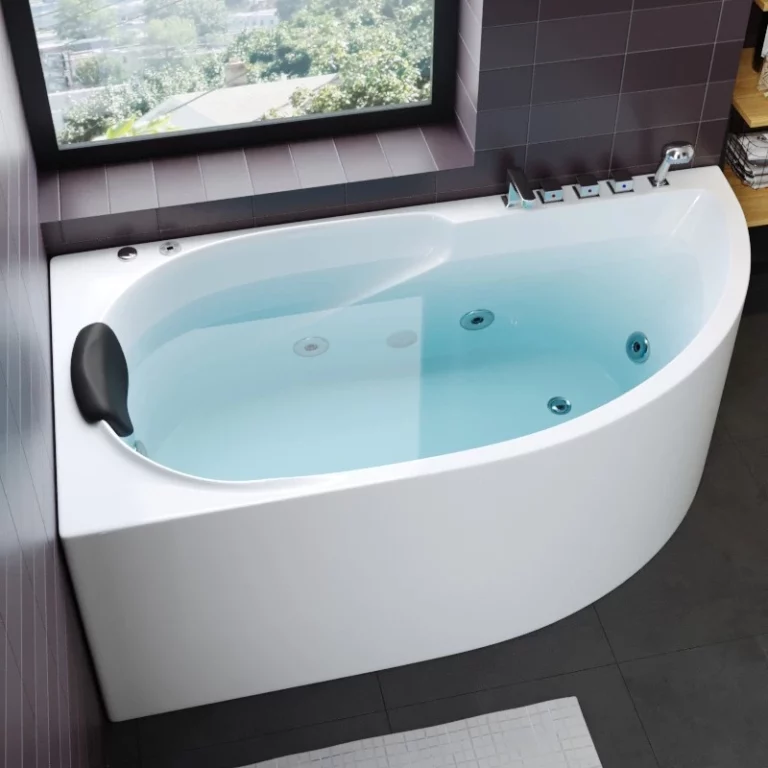
It combines warm air drying, warm water washing, drying, anti-bacteria as a whole, these functions are achieved by automatic induction system and button operating system dual-assist system, button interface is usually designed in the side of the product or external wall, the description text is small, the elderly, disabled and other special groups are more inconvenient to use, and later the “voice control The introduction of “voice control” technology has solved similar problems.
In general, the design of home bathroom ceramics products is no longer limited to practical functions, but is oriented towards the multidimensional needs of the user, and the definition and scope of functions have been extended in a deeper way.
With the support of rapid technological development, practical function interacts with aesthetic function and cognition, and the relationship between the three is no longer centred on practical function, but has entered a stage of mutual integration.
At this time, the subjective initiative of the design of domestic bathroom ceramics has been greatly enhanced, and external factors such as technology, economics and the market are no longer the main ‘constraints’ on the design process, but rather a relationship of mutual promotion and development.
In the past 20 years, in the context of global economic integration, modern technology and diversification of industrial structure, the design of bathroom ceramics products in China has been developing more and more vigorously, and is also actively developing towards green and low-carbon, innovation-driven and quality-efficient development. As a result, the current functional design of home bathroom ceramics is no longer just at the single level of serving users, but has risen to the stage of in-depth exploration of environmental issues.

(1) The practical function has evolved from “experience service” to “full service”.
In the 21st century, the functional services of home bathroom ceramics products have begun to shift towards diversification and intelligence. For example, home bathroom ceramics products have gradually developed in the direction of temperature control, hydrotherapy and auxiliary bathing.
(2) The aesthetic function has expanded from a “consumer orientation” to a “humanistic orientation”.
Users in the process of buying bathroom ceramics products, is not only to personal aesthetic interest, bathroom space decoration style as the only selection criteria, but also to join the “connotation of beauty” considerations.
(3) Cognitive function from “interaction” to “identity” extension.
As the level of user demand increases, the cognitive function also undergoes a deeper transformation, with users gradually beginning to pay attention to the design philosophy, brand image, corporate culture and national strategy behind the product. As users’ perceptions gradually develop towards green consumption, their perceptions of home bathroom ceramics products are also oriented towards the values of green, energy saving and environmental protection, forming a “value-based consumer view”. For example, a concealed tank toilet under the Geberit brand uses the same drainage system to achieve real water savings in terms of drainage.
It is designed to be used in two ways: a double flush function to avoid waste and a flush-and-stop, which is more free than a double flush and can be stopped at any time.
From an overall perspective, the understanding of function in domestic bathroom ceramics design has undergone a process of development from shallow to deep, and its design core has also undergone a change from “object-centred” to “human-centred” and “environment-centred” thinking. The core of design has also undergone a shift from ‘object-centred’ to ‘human-centred’ and ‘context-centred’ thinking.
In the early stages of development, the core of the functional design of home bathroom ceramics was the product, with a shallow understanding of the interaction between the product and people, and insufficient analysis of the user’s needs, the concept was mostly centred around such themes as “what problems arise from the function” and “how to better solve the existing use of the function”. The design work is mostly based on the theme of “what problems are created by the functionality” and “how to better solve the existing problems”.

After the rapid development period, the core of functional design shifted to the complex problem of the shallow and high-level needs of “people”, and the understanding of “people” was mainly based on “users” and “residents”. At this time, the understanding of “people” is mainly based on the multidimensional identity of “users” and “residents”, which not only optimises and refines the design activities and objectives for the basic needs of users, but also further focuses on the behavioural mechanisms and spiritual needs of users.
With the current development of economic globalisation, the upgrading of industrial technology, the expansion of the consumer market and the deepening of design theory, the functional design of domestic bathroom ceramics has paid more attention to the ‘environment’, including both the ‘human environment’ and the ‘natural environment’. The functional design of the home bathroom ceramics focuses more on the “environment”, including both the “human environment” and the “natural environment”.
The concept of functional design for home bathroom ceramics begins to revolve around the themes of “how to protect the human dimension of the product” and “how to explore the potential problems of the natural environment”. This leads to the following functional design principles.
From a developmental perspective, the perception of functional design in domestic bathroom ceramics products has moved from inherent functionality to multiple functions, a process of continuous deepening and exploration. In the early stages of development, the design only aimed to meet the needs of users in terms of basic use and operation.
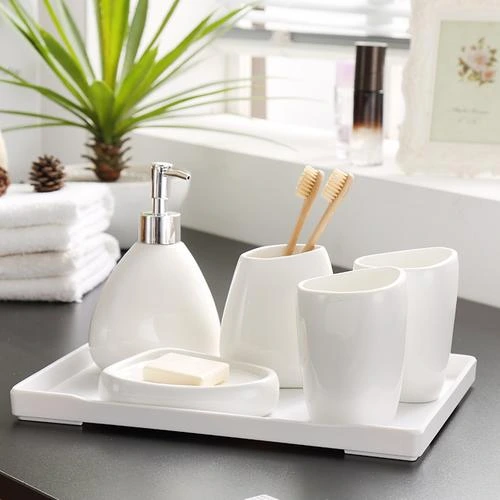
After the rapid development period, the home bathroom ceramics design industry has realised that functional design is not only about traditional concepts such as product quality and performance, but also about the integration of multiple functions. The domestic bathroom ceramics design industry clearly recognises that factors such as user identity, family structure and natural environment can affect the play and expansion of bathroom ceramics product functions, and the functions of domestic bathroom ceramics products gradually focus on the multi-level needs of people.
It can be seen that, in the process of defining the concept and designing the practical functions of home bathroom ceramics products, the focus should be on how to combine the quality of the product with the “deep needs” of the user, on the basis of perfecting the “inherent configuration” of the product. In the conceptualisation and design practice of bathroom ceramics products, the focus should be on how to combine the quality of the product with the “deep needs” of the user, while improving the “inherent configuration” of the product.
Therefore, the practical functions of home bathroom ceramics products should be designed from the user’s perspective, not only from the physical, physiological and psychological aspects of the user’s single body, but also from the behavioural trajectory, lifestyle and other aspects of the user’s needs in more detail, to explore the user’s hidden needs and potential needs, to improve the “shallow use needs The integration of “superficial use needs” and “deep care needs” is improved.
From the perspective of development, the aesthetic function of domestic bathroom ceramics products has changed from the initial situation of “Form Follows Function” to the current stage of personalised and diversified development where “form and function go hand in hand”. At the early stage of development, the aesthetic function of home bathroom ceramics products was not yet valued, and the shape and decoration were subject to the constraints of technology and function.
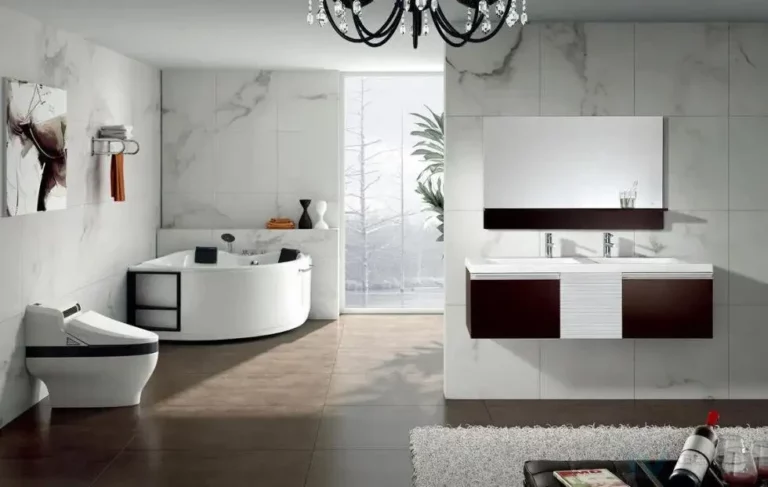
After entering a period of rapid development, bathroom ceramics products designed for our own lifestyle and local cultural background are more popular in the market, such as health care shower heads and massage sanitary ware, which are inspired and based on the concept of health and wellness in the traditional Chinese culture. Overall, the aesthetic function of home bathroom ceramics design has the qualities of local identity, national vitality and cultural soft power.
It can be seen that the design and development of the aesthetic function of the domestic bathroom set needs to take into account the beauty of the product and the beauty of the connotation, and to combine the two organically.
The user’s “multi-dimensional feelings” include visual effects, tactile feelings, auditory linkages and other aspects. Due to the specificity of the materials used in bathroom ceramics, there is much scope for the development of visual, tactile and auditory aesthetic perceptions.
The “cultural integration” of the product is to emphasise the aesthetic function of home bathroom ceramics, further deepen its own aesthetic connotation, based on market, technical and economic factors, guided by the user’s visual, tactile, auditory and sensory factors, focusing on the combination of regional characteristics or traditional culture and other deep-seated The aesthetic connotation of bathroom ceramics products is artistic and humanised.
In terms of development, the cognitive function of home bathroom ceramics products has been gradually emphasized with the high frequency iterations of technological and information-based products.
During this development process, a progression from identity to interaction to environment was formed, and the range of cognitive functions of home bathroom ceramics was constantly updated and broken through.
Cognitive functions are mostly based on the commonality of user use and effective interaction with different users.
After entering a period of high quality development, the concept of eco-environmental protection has been applied throughout the production process of household bathroom ceramics products, and household bathroom ceramics products have gradually developed in the direction of light weight, energy saving and water saving.
It can be seen that the user’s perception of home bathroom ceramics products is not only limited to the interaction between people and things, but is also concerned about the environmental issues that may arise during the production and use of the products.
The cognitive function design of home bathroom ceramics products should, firstly, weaken the user’s cognitive load. The user’s cognitive load is caused by the design of the product providing too many choices or not enough clear information and causing the user to think for too long; the cognitive load at the level of sight, sound and touch can lead to improper installation and operation.
Secondly, we should deepen the development path of “green design” based on the premise of user choice and improve the environmental performance of products, including product recycling rate, energy consumption rate and the emission rate and treatment rate of pollutants in the production and use process.
In general, the core of the change in the path of functional design of bathroom ceramics products is the change in design thinking. Whereas the initial understanding and discussion of the relationship between ‘people’, ‘things’ and ‘environment’ was relatively superficial, today bathroom ceramics design should be more The design of bathroom ceramics should be more comprehensive.
The definition of ‘things’ in contemporary domestic bathroom ceramics product design concepts should not be limited to the narrow level of ‘products’, but should be based on a ‘matter of fact’ perspective. the scientific study of the design issues behind the product.
The definition of ‘person’ should not be limited to the single identity of ‘user’, but should pay more attention to the coordination and unity of ‘individual’ and ‘group’. the harmonisation and unity of the “individual” and the “group”.
The definition of ‘environment’ should not be limited to the ‘current environment’, but should be integrated into the design, production, transport, use and disposal of bathroom ceramics products.
The options for Domestic Bathroom Ceramics are vast, ranging from classic to contemporary. This article will guide you through the selection process.
In classic Bathroom designs, traditional ceramic tile for Bathroom is often preferred. Vintage patterns and warm colors are common.
Modern bathrooms lean towards sleek lines and minimalistic designs. Porcelain tile offers a polished appearance, perfect for this style.
For a rustic Bathroom, textured Domestic Bathroom Ceramics can evoke a cozy and natural atmosphere.
When luxury is the goal, choosing high-end Domestic Bathroom Ceramics will enhance the Bathroom’s elegance.
Green bathrooms often use recycled or sustainably-sourced ceramic tile for Bathroom, adhering to environmentally conscious principles.
Affordable Domestic Bathroom Ceramics do not mean sacrificing quality or style. You can find various options that suit your budget.
Bathroom design trends are ever-changing, and staying updated can help in making an informed choice.
Selecting Domestic Bathroom Ceramics that harmonize with the Floor and Decor is essential for a cohesive look.
Choosing the right Domestic Bathroom Ceramics allows you to create a bathroom that reflects your taste, lifestyle, and values. By understanding the different styles and options available, you can build your dream bathroom with confidence.
Ceramic tile is widely used for its durability and affordability. Available in various colors and designs.
Porcelain tiles are renowned for their strength and water resistance, ideal for bathrooms.
A modern choice, supergres tiles are known for their aesthetics and versatility.
These reflect the latest trends and can provide a luxurious feel to the bathroom.
Marble tile adds an elegant touch, but requires regular maintenance.
Bathroom ceramics are not only for walls; they can also enhance the floor with beautiful patterns.
| Type | Feature | Use |
|---|---|---|
| Ceramic Tile | Durable | Walls, Floors |
| Porcelain Tile | Water-resistant | Walls, Floors |
| Supergres Tiles | Aesthetic | Walls |
| Modern Tiles | Trendy | Walls |
| Marble Tile | Elegant | Walls |
| Tiles | Versatile | Walls, Floors |
| The Tile Shop | Variety | Specialized Stores |
| Floor and Decor | Complete Look | Walls, Floors |
Note: The choice of bathroom ceramics depends on individual preferences, needs, and budget.
By considering these factors, one can select the perfect bathroom ceramics that meet both aesthetic and functional needs.
Ceramic tile is known for its long-lasting nature, making it a wise investment for bathrooms.
Being water-resistant, it’s an ideal choice for areas exposed to moisture.
Ceramic tile comes in various shapes, sizes, and colors, allowing creative designs.
Simple cleaning methods can keep it looking new for years.
Ceramic tile offers a budget-friendly option without compromising on quality.
Some options are made from recycled materials, contributing to eco-friendliness.
| Benefit | Description |
|---|---|
| Durability | Withstands wear and tear, long-lasting |
| Water Resistance | Suitable for moist environments |
| Versatility | Variety of design options |
| Easy Maintenance | Requires minimal care |
| Cost-Effective | Affordable compared to some other materials |
| Environmentally Friendly | Some tiles made from recycled content |
Ceramic tiles not only enhance the beauty of your bathroom but also provide practical benefits that make them a preferred choice among bathroom ceramics.
A mild detergent and soft cloth can maintain the shine of bathroom tile.
Using abrasive cleaners can harm the finish of the ceramics.
For porous tiles like Marble tile, using a sealant helps in protection.
Fixing chips and cracks promptly will prolong the life of the bathroom ceramics.
Occasional professional cleaning ensures deep cleansing.
Note: Regular maintenance and the right cleaning approach can keep bathroom ceramics looking new and beautiful.
Modern bathroom tiles are exploring bold geometric patterns.
Different textures, such as glossy and matte, are being combined for a unique look.
The trend is moving towards environmentally friendly bathroom ceramics.
Ceramic tile that resembles natural stone or wood is gaining popularity.
The tile Shop and manufacturers are employing technology for precision and new designs.
| Trend | Description |
|---|---|
| Geometric Patterns | Bold and captivating designs |
| Texture Variety | Combining different finishes |
| Eco-Friendly Tiles | Using recycled or sustainable materials |
| Natural Looks | Mimicking natural materials |
| Technological Advancements | Using technology for innovative designs |
These trends reflect a blend of creativity, sustainability, and innovation in bathroom ceramics design, making it an exciting field to explore.
Ensure the surface is clean, dry, and smooth before installing bathroom tile.
Select a suitable adhesive for the specific type of ceramic tile.
Carefully place the tiles, maintaining even spacing with tile spacers.
Use a tile cutter for precise cuts to fit edges and corners.
Fill the spaces between tiles with grout, wiping away excess.
Apply sealant over the grout to prevent moisture absorption.
Allow sufficient time for the adhesive and grout to cure.
Inspect the tiles regularly for loose pieces and repair as needed.
Installing bathroom ceramics correctly ensures longevity and enhances the appearance of the space.
Ceramic tile and porcelain tile are commonly used for bathroom floors, providing durability and water resistance.
Wall tiles, such as modern bathroom tiles, add aesthetics to the bathroom walls.
Coordinating floor and wall tiles creates a cohesive look.
Consider factors like slip resistance for floor tiles and design preferences for wall tiles.
Supergres tiles may be preferred for specific wall designs.
| Usage | Types of Tiles |
|---|---|
| Floor | Ceramic Tile, Porcelain Tile, Slip-resistant options |
| Wall | Modern Bathroom Tiles, Decorative options |
Understanding the suitability of bathroom ceramics for floors and walls enables homeowners to make informed decisions for their design projects.
The Tile Shop and other specialty stores offer a wide selection.
Online platforms may provide competitive pricing on bathroom ceramics.
For bulk purchases, consider wholesalers who specialize in tiles.
Local dealers often have exclusive designs and offers.
Keep an eye on seasonal sales to avail discounts.
Evaluate the quality of the bathroom ceramics, not just the price.
| Place to Buy | Advantages |
|---|---|
| Specialty Stores | Variety, Expert Advice |
| Online Retailers | Convenience, Competitive Pricing |
| Wholesale Suppliers | Bulk Discounts |
| Local Dealers | Exclusive Designs, Personalized Service |
| Seasonal Sales | Discounts on Quality Products |
Choosing the right place to buy bathroom ceramics can lead to satisfaction in both quality and cost.
These are popular for their durability and wide range of colors and patterns.
Known for its strength and water resistance, it’s suitable for floors and walls.
These are renowned for their unique designs and high-quality finish.
These tiles are in line with the latest trends, offering various textures and styles.
Marble adds luxury and elegance but requires more maintenance.
| Type | Characteristics |
|---|---|
| Ceramic Tile | Durable, Versatile |
| Porcelain Tile | Strong, Water-Resistant |
| Supergres Tiles | Unique Designs, Quality Finish |
| Modern Bathroom Tiles | Trendy, Various Textures |
| Marble Tile | Luxurious, Needs Maintenance |
Understanding these types allows homeowners to select the perfect bathroom ceramics for their needs.
Choose floor tiles that offer slip resistance to prevent accidents.
Ensuring proper installation minimizes the risk of tiles coming loose.
Check for cracks or loose tiles that may lead to injuries.
Avoid harsh chemicals that may degrade the surface and create hazards.
Use suitable tiles for shower enclosures, considering factors like water absorption.
| Safety Aspect | Consideration |
|---|---|
| Slip Resistance | Choosing Right Floor Tiles |
| Proper Installation | Using Professional Services or Following Guidelines |
| Regular Inspection | Checking for Damages |
| Appropriate Cleaning Products | Non-abrasive Cleaners |
| Specific Areas | Suitable Tiles for Different Spaces |
Safety considerations ensure a secure and lasting setup for bathroom ceramics.
Create artistic designs using small pieces of ceramic tile.
Combine different types of tiles like Porcelain and modern bathroom tiles.
Use distinctive designs or supergres tiles for a standout wall.
Create a themed bathroom using specific colors and patterns.
Design unique floors using a mix of shapes and colors, or using Floor and Decor collections.
| Creative Idea | Description |
|---|---|
| Mosaic Patterns | Artistic expressions using small tiles |
| Mix and Match | Combining Various Types |
| Feature Walls | Distinctive Wall Designs |
| Themed Spaces | Coordinated Themes |
| Floor and Decor | Innovative Floor Designs |
These creative ideas can transform a bathroom into a visually stunning space, highlighting the beauty and versatility of bathroom ceramics.
The design of bathroom ceramics is an important symbol of the progress of people and society. The development of the product design concept was initially restricted by a variety of external factors, and the product was developed under difficult conditions.
In the end, the initial state of satisfying the basic needs of use and production rose to the current stage of experiencing the use, aesthetic art, and cognitive depth of the spirit, effectively improving the daily experience of residents.

Introduction The Algerian bathroom fixtures market is booming. Quality shower products are in high demand. Distributors and bath product companies seek reliable suppliers. This guide
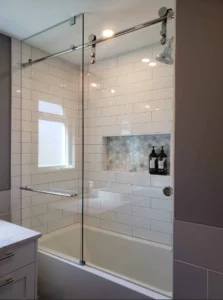
Frameless shower, also known as full glass showers, are becoming a staple of modern bathroom design. This comprehensive guide will walk you through everything you

Introduction The Algerian bathroom fixtures market is booming. Quality shower products are in high demand.

Frameless shower, also known as full glass showers, are becoming a staple of modern bathroom
The bathroom is no longer just a functional space. It’s a sanctuary, a place for
